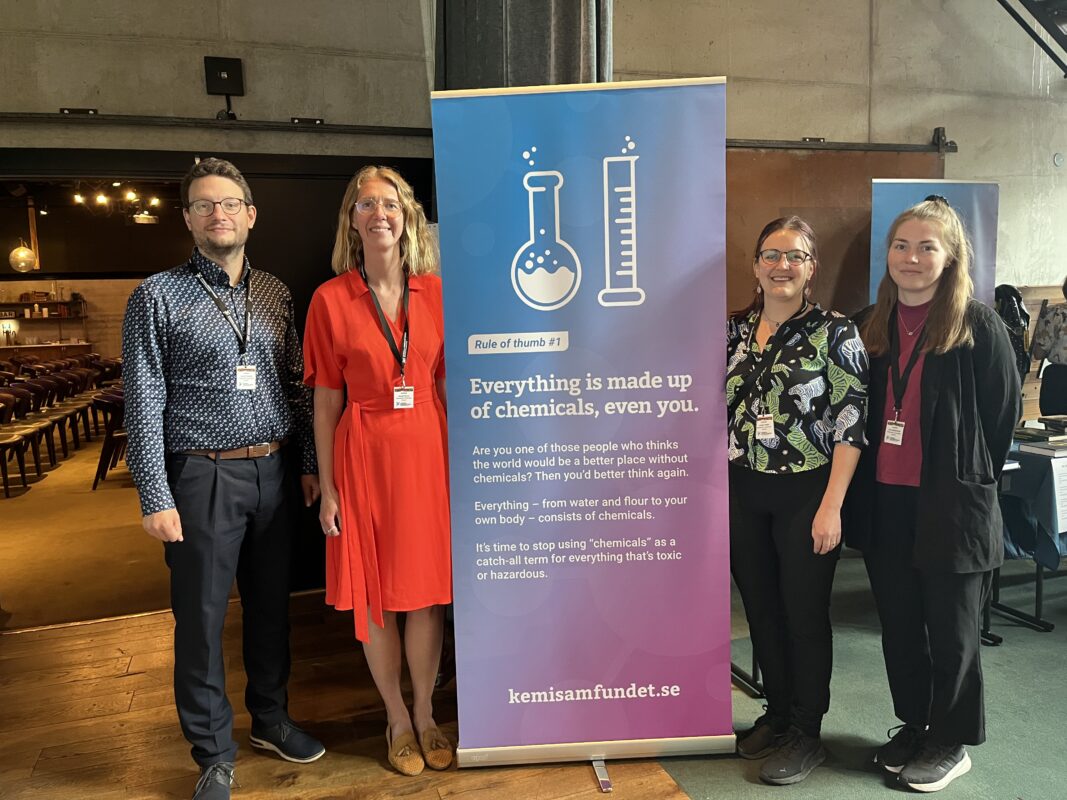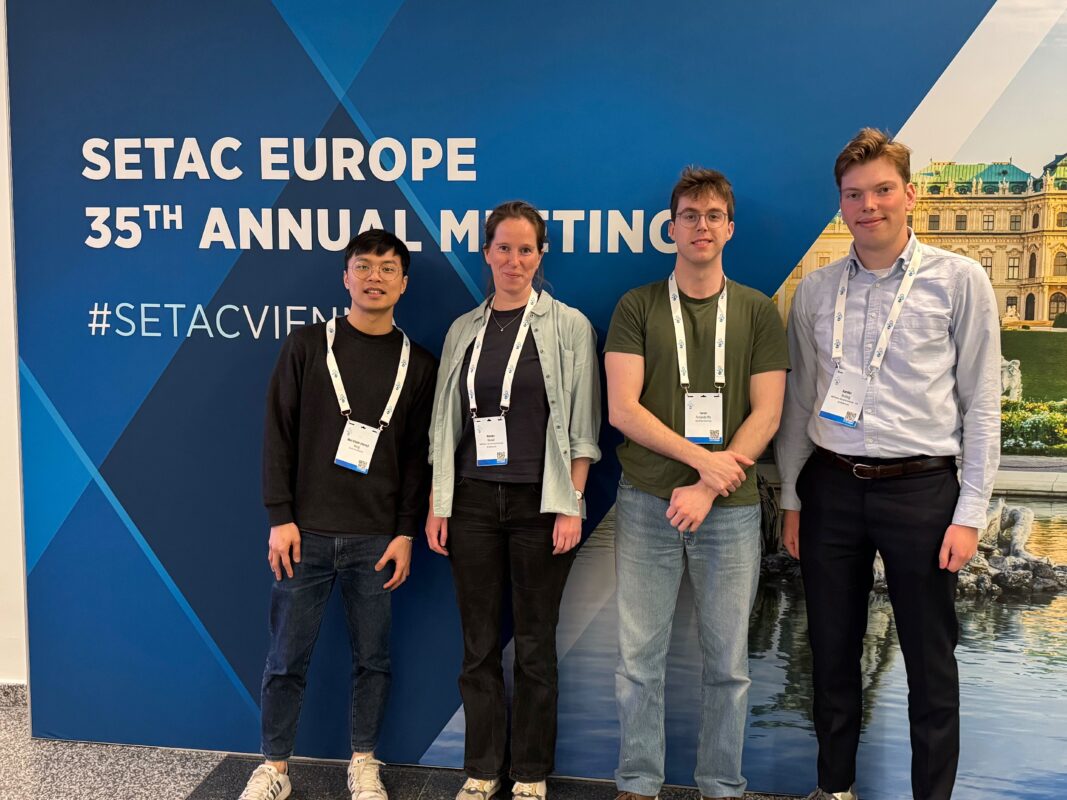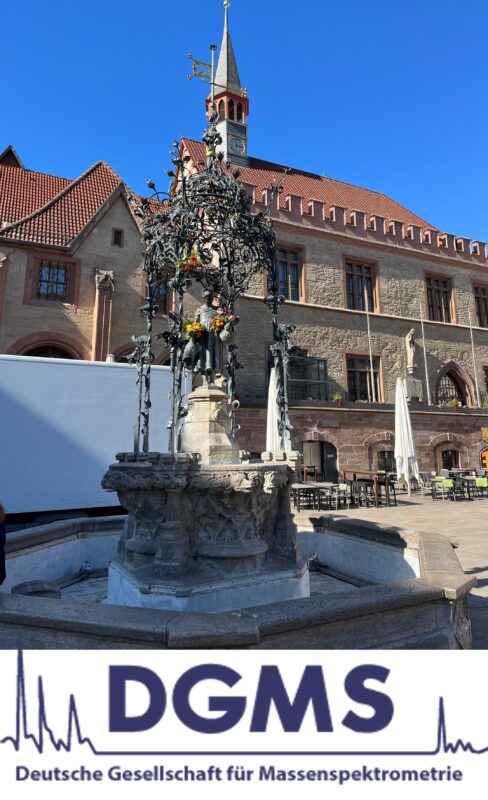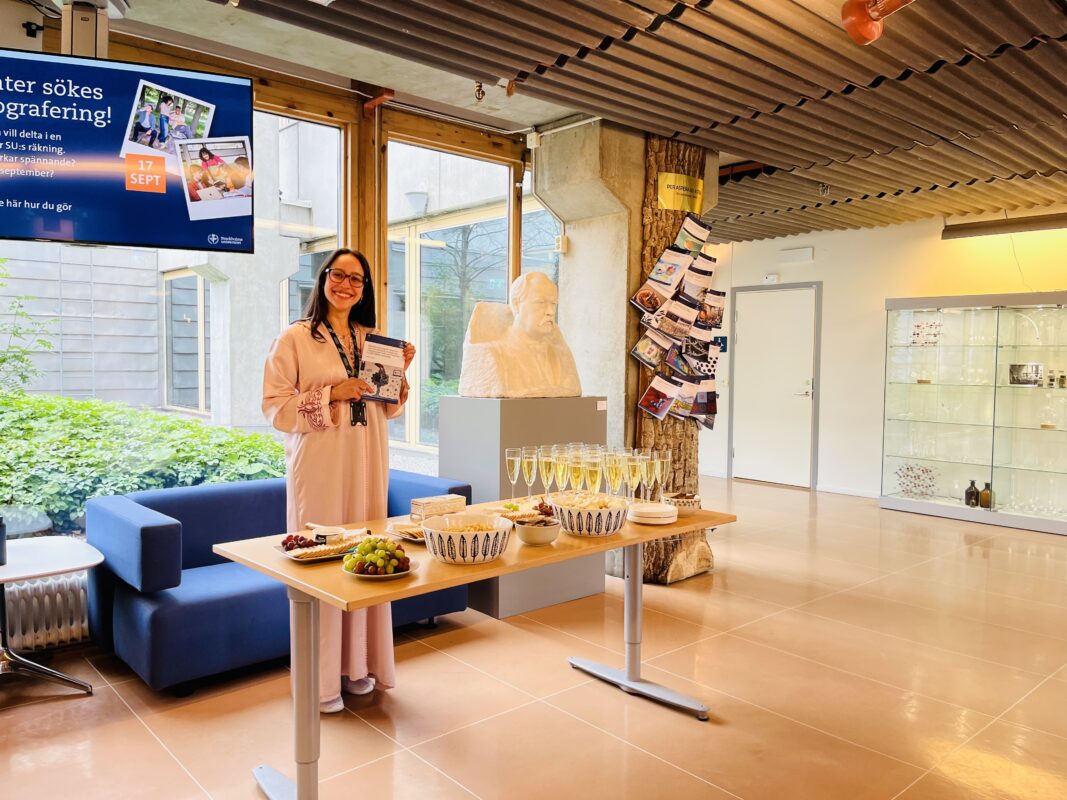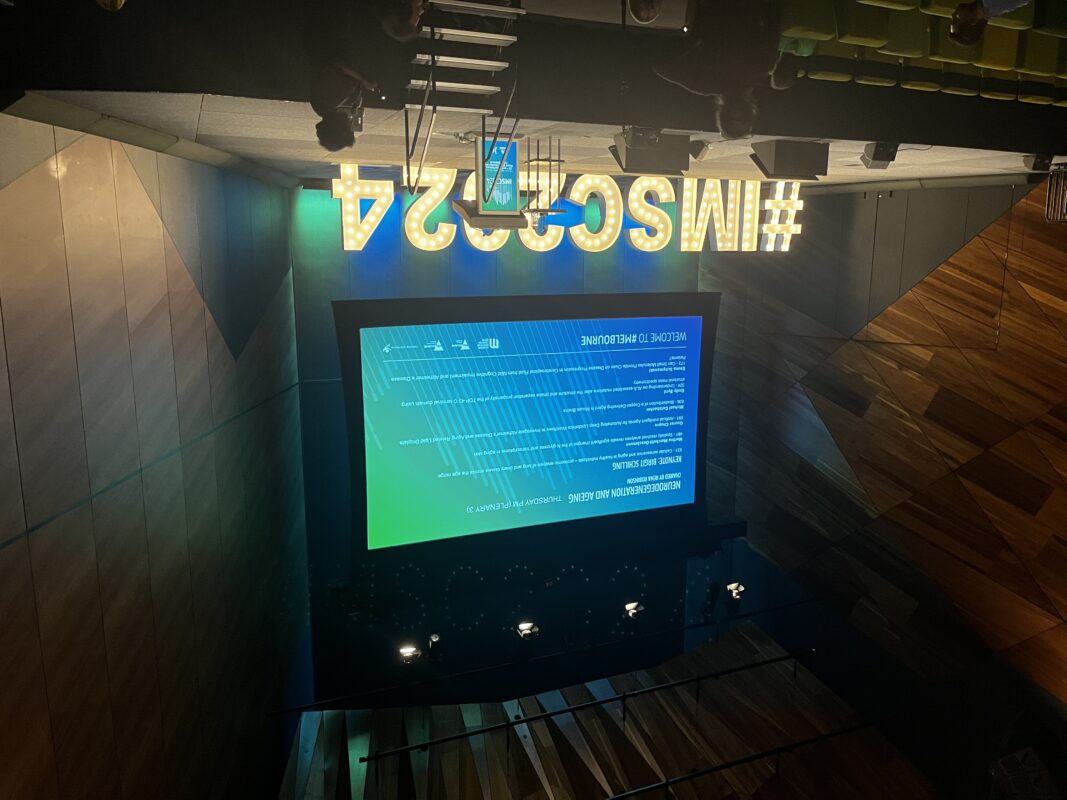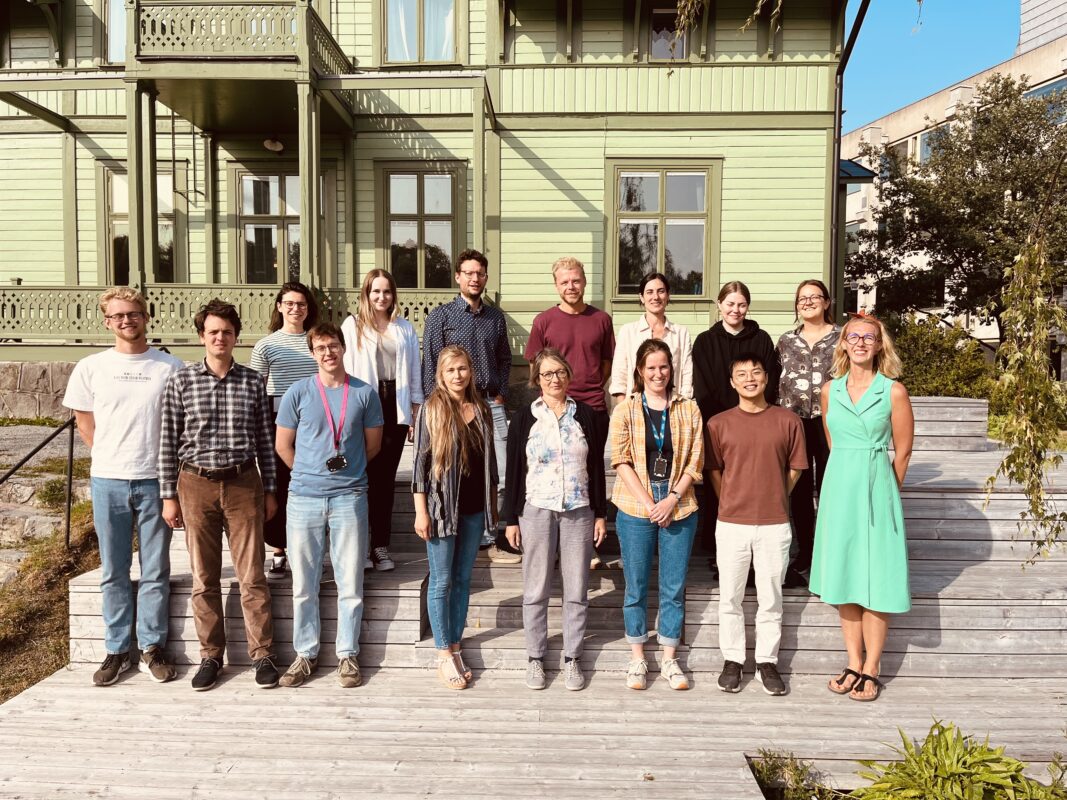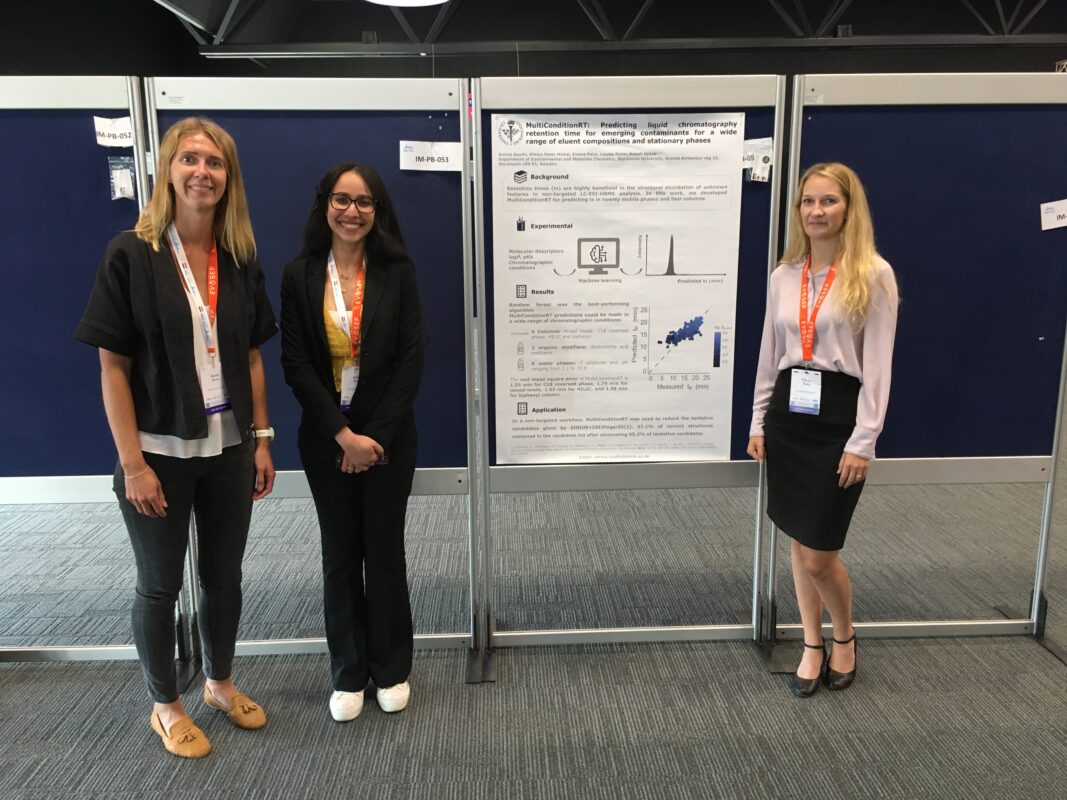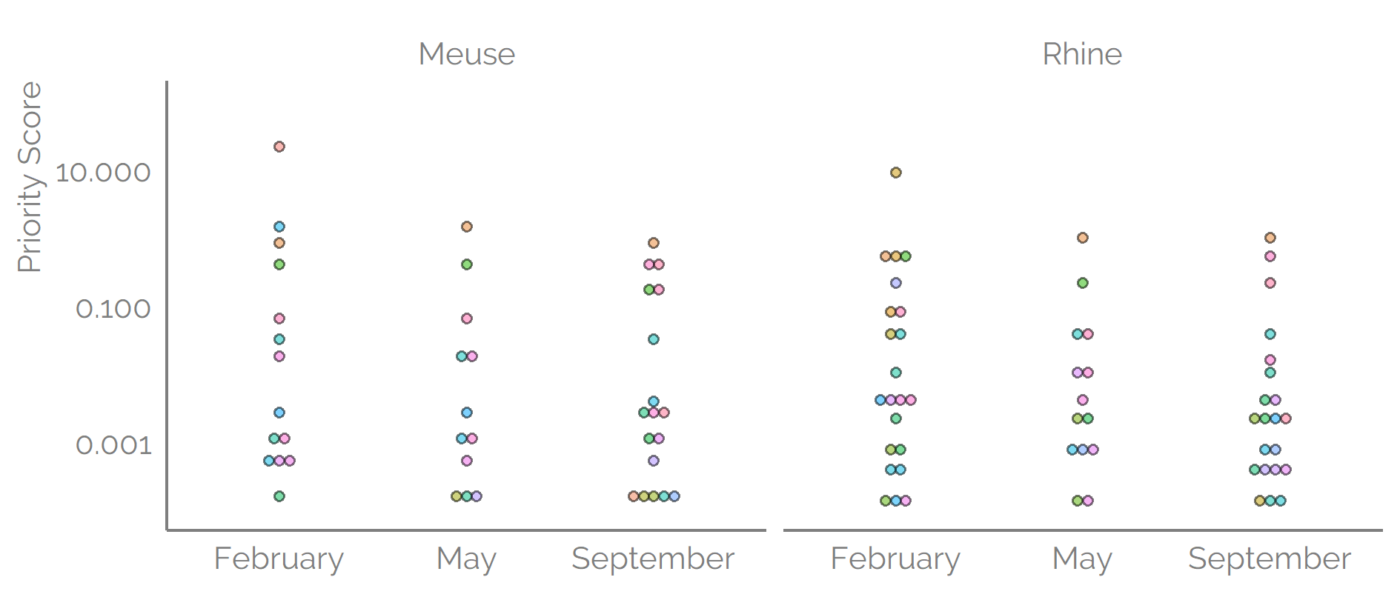Last week the 3rd National Meeting of the Swedish Chemical Society, SCS2025, took place. The conference was hosted in a wonderful venue at the Steam Hotel in beautiful Västerås. Our group was happy to participate in two oral and two poster presentations. PhD students Louise Malm and Iris Hättestrand presented posters about their ongoing research. […]
Tag Archives: massspectrometry
Last week, the 35th Annual Meeting of the Society of Environmental Toxicology and Chemistry (SETAC) took place in Vienna, where Harry had the opportunity to present his research through a platform presentation, and Lucas contributed with a poster! Let’s hear what they have to tell: I was excited to present my work at SETAC last […]
From the 4th to the 7th of March, the Deutsche Gesellschaft für Massenspektrometrie held its annual meeting. This year, the conference took place in the picturesque old town of Göttingen, Germany. I was delighted to participate and present our recent work in a keynote talk titled “Detection and Identification of Toxic and High-Risk Chemicals with […]
Today Amina Souihi, the first graduating PhD student from the Kruvelab at Stockholm University, nailed her thesis alongside a practice presentation in the department. In the last five years, Amina has been working on developing machine learning methods for improving the detection and identification of chemicals with liquid chromatography high-resolution mass spectrometry in non-target screening. […]
Recently, I had the privilege to return to my home-city of Melbourne, Australia to attend the 2024 International Mass Spectrometry Conference. My session was chaired by Prof Emma Schymanski of the University of Luxembourg, and the keynote speaker was Prof Kevin Thomas of the University of Queensland. Kevin started the session with some brilliant take […]
The summer is finishing at Stockholm but we have had very exciting research visitors in the last weeks and a lot of exchange of new ideas. In the last weeks, we have had Prof. Juliane Hollender from Eawag visit the Department of Environmental Science, SU. This gave space for discussions of research activities on toxicity […]
Last Tuesday Jon Sobus from EPA presented some of the findings from a recent paper Uncertainty estimation strategies for quantitative non-targeted analysis, where we were also happy to collaborate, on the BP4NTA online meeting. People from BP4NTA meetings have been reaching out with questions on ionization efficiency-based quantification. Some of these are often asked of us and I decided […]
Last week Amina, Pilleriin, and I participated in the International Mass Spectrometry conference 2022 in Maastricht, The Netherlands. With more than 1300 participants IMSC was the first big mass spec conference in Europe after covid and a special feeling of enthusiasm was in the air. We kicked off on Monday morning with a session on […]
Recently, I attended my first in-person conference, the Nontarget Analysis for Environmental Risk Assessment SETAC Focused Topic Meeting. It was held in Durham, NC, USA from May 22 -26 2022, and it was a very intense week filled with interesting talks, posters, and meetings with other scientists. It was very nice to put a face […]
How do you know which of the compounds detected in suspect or non-targeted screening is most likely to cause an adverse effect? Which is most toxic? Which is present in the highest concentration? Which is having a concentration close to a toxic endpoint? This is exactly what we are answering in our latest research in […]


